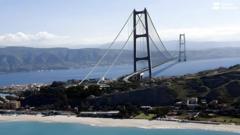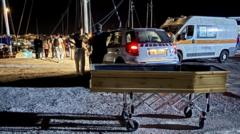With a budget of €13.5 billion ($15.6 billion), this ambitious initiative aims to not only improve transportation efficiency but also create approximately 120,000 jobs annually in two economically challenged Italian regions. Despite its potential benefits, the project has faced historical setbacks, with prior proposals hindered by cost overruns, environmental impacts, and public safety fears, compounded by concerns regarding possible mafia influence.
The Meloni administration seeks to classify the bridge as a military expenditure to meet NATO defense spending targets. However, the project still requires endorsement from the Italian Court of Auditors and several environmental agencies in both Italy and the EU. Moreover, local communities, worried about property expropriations and environmental implications, are vocalizing their objections, with some politicians labeling the project "controversial and divisive."
Opponents include the mayor of Villa San Giovanni and grassroots committee members who argue that the bridge could exacerbate water scarcity issues already plaguing the region. Currently, rail transport across the strait relies on ferry shuttles, underscoring the pressing need for improvement but highlighting the complexity of implementing such a grand vision amidst local dissent and practical challenges.
The Meloni administration seeks to classify the bridge as a military expenditure to meet NATO defense spending targets. However, the project still requires endorsement from the Italian Court of Auditors and several environmental agencies in both Italy and the EU. Moreover, local communities, worried about property expropriations and environmental implications, are vocalizing their objections, with some politicians labeling the project "controversial and divisive."
Opponents include the mayor of Villa San Giovanni and grassroots committee members who argue that the bridge could exacerbate water scarcity issues already plaguing the region. Currently, rail transport across the strait relies on ferry shuttles, underscoring the pressing need for improvement but highlighting the complexity of implementing such a grand vision amidst local dissent and practical challenges.




















